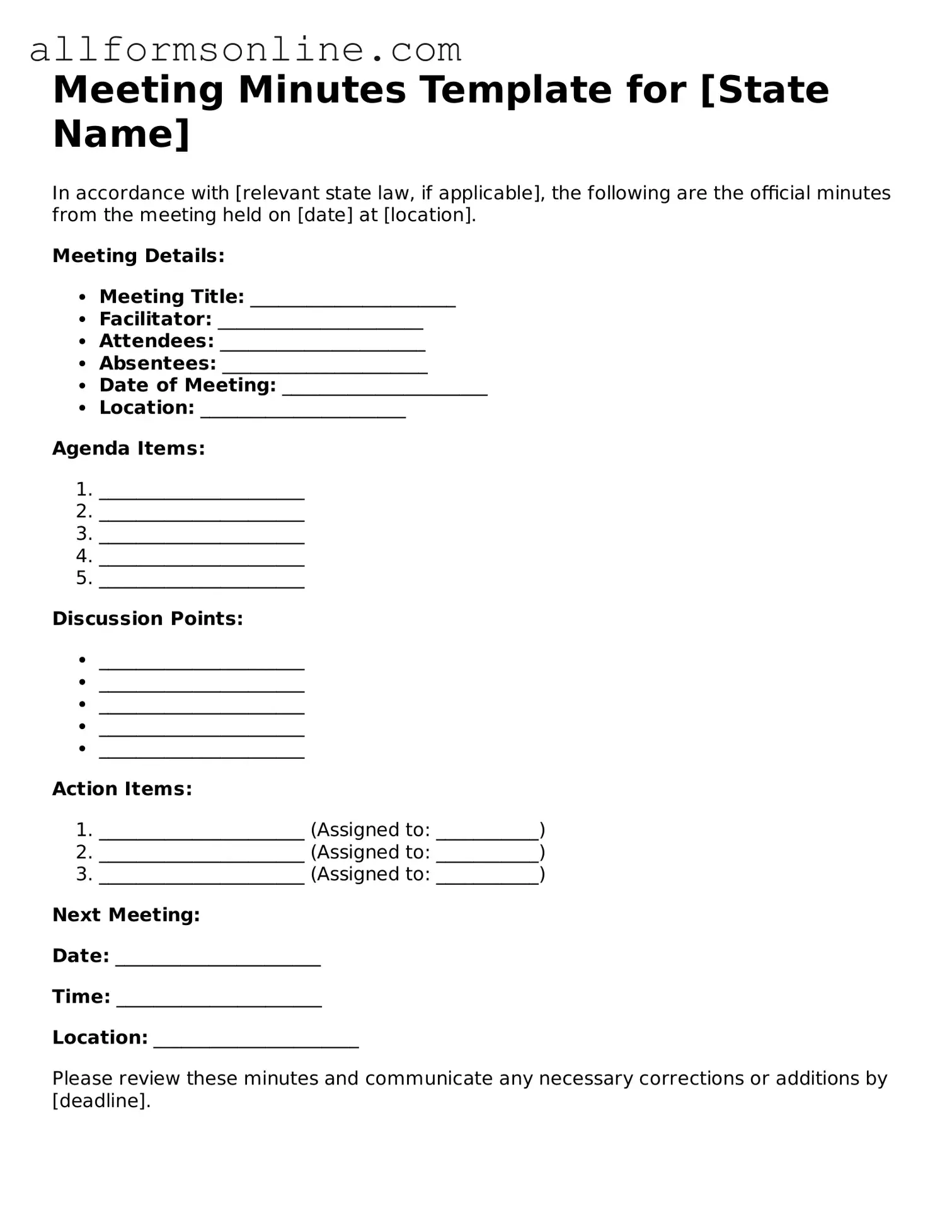What are meeting minutes?
Meeting minutes are a written record of what transpired during a meeting. They capture key discussions, decisions made, and action items assigned. This document serves as a reference for attendees and those who were unable to attend, ensuring everyone is on the same page regarding what was discussed.
Why are meeting minutes important?
Meeting minutes play a crucial role in maintaining transparency and accountability. They help track progress on action items, provide a historical record of decisions, and can serve as a reference for future meetings. Additionally, they can protect an organization legally by documenting decisions and discussions.
Who is responsible for taking minutes?
Typically, the responsibility for taking minutes falls to a designated individual, often referred to as the minute-taker or secretary. This person may be appointed before the meeting or may volunteer. It’s important for the minute-taker to be attentive and organized to accurately capture the meeting's content.
What should be included in meeting minutes?
Effective meeting minutes should include the date and time of the meeting, the names of attendees and absentees, a summary of discussions, decisions made, and any action items along with assigned responsibilities. It’s also beneficial to note any important announcements or next meeting details.
How should meeting minutes be formatted?
While there is no one-size-fits-all format for meeting minutes, a clear and organized structure is essential. Consider using bullet points or numbered lists for action items, and ensure that sections are clearly labeled. Consistency in formatting helps readers quickly find the information they need.
When should meeting minutes be distributed?
Meeting minutes should ideally be distributed as soon as possible after the meeting, typically within a few days. This prompt distribution helps ensure that the information is fresh in everyone’s mind and allows for any necessary corrections or clarifications to be made quickly.
How can I ensure the accuracy of meeting minutes?
To ensure accuracy, the minute-taker should actively listen during the meeting and take notes. After the meeting, it can be helpful to review the notes with another attendee to confirm details. If possible, draft the minutes while the meeting is still fresh in your mind and seek feedback before finalizing.
What if there are disagreements about what was discussed?
If disagreements arise regarding the content of the meeting minutes, it’s important to address them promptly. Open communication among attendees can help clarify misunderstandings. If necessary, amendments can be made to the minutes to reflect the consensus of the group.
Are there any legal considerations for meeting minutes?
Yes, meeting minutes can have legal implications, especially for organizations such as corporations or nonprofits. They may be used as evidence in disputes or regulatory matters. Therefore, it’s essential to ensure that minutes are accurate, objective, and free from personal opinions or interpretations.
Can meeting minutes be used for future reference?
Absolutely! Meeting minutes serve as a valuable resource for future meetings. They help track ongoing projects, remind attendees of past discussions, and provide context for new participants. Keeping a well-organized archive of minutes can greatly benefit an organization’s operations.
